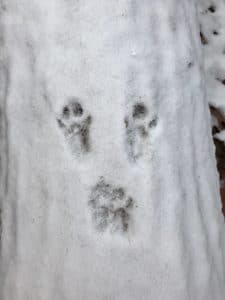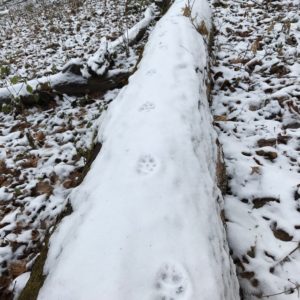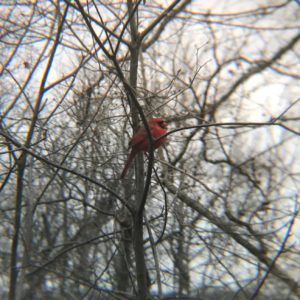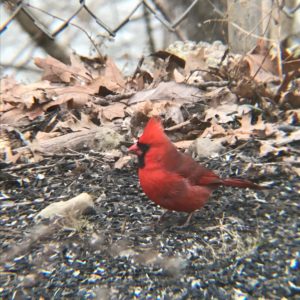

Sometimes the stiff crunch of frozen leaves under our boots and the dull browns and grays can make winter seem a little underwhelming in the nature scene. We know from reading ‘Don’t Poke a Bear’ that most animals are active during winter. It’s funny to think about how many animals are eating, sleeping, and surviving all around us, most of the time without our knowledge. Winter is no exception. And with a little magic, we can get a better glimpse into their lives. And by magic, I mean a fresh coat of snow. Even their stealth and nocturnal habits are no match against Mother Nature. It’s like every movement is recorded into the blank pages of a book. For the Harry Potter fans out there, think of Marauder’s map. All of a sudden, footprints appear!
Tracking is an activity that can spruce up your winter time blues. One part of tracking is to identify footprints. Looking at the size, shape, gait, and number of digits will help you to decipher who was there. You can start tracking in your own backyard! Did you know that squirrels and rabbits hop with their back feet landing in front of their front feet (pic 1)? You may learn to appreciate how far squirrels can hop and that their tracks always seem to disappear next to a tree. Do you have a pet dog or cat? Look for claw marks with your dog, but not with your cat. Similar to your pets, our wild canine friends like fox and coyote also have four digits. Be sure to check on the surface of logs: foxes enjoy a little balancing act (pic 2). I love seeing the simple bird tracks from birds hopping around my feeders. Have you ever looked close enough to find wing prints in the snow? Some more obvious clues around a feeder may include tufts of hair, small feathers, or even blood! Some of my favorite tracks to find are tiny feet with a line running through it. Can’t you just picture the mouse dragging its tail while it hops through the snow? If you pay enough attention, you may even find the mouse’s tunnel or home.
On one tracking expedition, the temperatures had not gone over 25 degrees for a week, yet we saw evidence of: small song birds, great blue heron, coyote, fox, raccoon, squirrel, rabbit, field mouse, vole, turkey, and white-tailed deer. In addition to footprints, we found chewed twigs and nuts, urine, scat, and blood. You can be a beginner tracking the squirrels and birds in your backyard, or an experienced tracker following a fox back to its den. Tracking tells a story of what happened, whether it was a deer wandering around looking for food or a red-tailed hawk diving down to scoop up an unlucky field mouse. Tracking is a mystery waiting to be solved and I encourage you to put on your layers, take a hike, and tell your own story.
~Tracy







